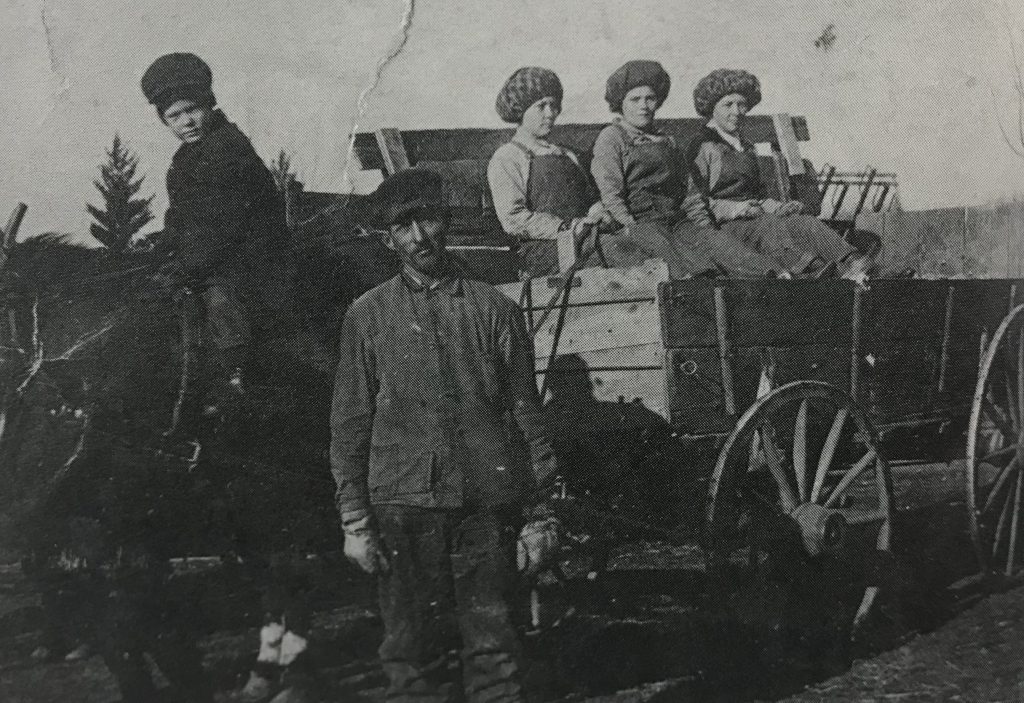The Winter for Tenant Farmers: Plum Creek and Delhi, 1856-1865
Delaware county, Iowa

Soon after the Kenyon’s first came to Plum Creek in the summer of 1856, Mrs. Kenyon learned to fear the coming winter. Already in August she was writing relatives back East, “I begin to dread the Winter. they tell such cold stories about here. they said last Winter was awful….their floors would ice when they mopped and the tables when they washed dishes.”
By December husband John was describing, in a letter, the winter conditions his wife had feared. “Monday night it commenced snowing and blowing and it lasted for forty hours. such a storm I never saw since I can remember. the snow is about twenty inches deep in the woods where it is not drifted and on. the prairie it is from one inch to 16 feet deep. you could not see two rods some part of the day. tuesday John Barnard went to hickory grove to drive his cattle and he got lost in the prairie and did not get back until the next morning. his folks was worried about him so his father in the course of the evening started to look for him and he got lost before he got ten rods from the house and the first thing he knew he brought up all standing at his own house and concluded not to try it again until morning.” Sarah observed, “people as a general thing clothe the west with to much romance I take it. its not all gold that shines.”
Some five years later relatives back in Rhode Island asked Sarah Kenyon if she and her husband John, tenant farmers in Iowa’s Delaware County, were getting rich. “you spoke of our getting rich,” she writes in reply. “we get enough to eat now that we could not always boast of. the clothes we have not come to yet. when we do I will let you know.” In this letter from February 23, 1861, Mrs. Kenyon is distracted by the severe winter and writes mostly of that.
“such a winter as we have had so far would make any body weep. cold as Greenland. snow…in the timber and banks to Johns neck on the prairie. the snow blowed so Saturday you could not see 3 rod and it has blowed just so much every snow storm. This winter is dreadful for our poor cattle with nothing but a shed and that made of hay and straw. John says he shall sell out before winter but I guess he will forget it next July. some were sowing wheat this time last year and now there is such a body of snow I fear & tremble for if wheat is not in early here it is a perfect failure.”

In his own letter back to Rhode Island, John corroborates his wife’s description of the winter of 1861. “the snow has been from two to three feet deep since the first of January and cold most severest weather I ever saw. the snow would blow enough to suffocate one to be out in it. all I have did this winter is my chores and I could not half do them some of the time it blowed and snowed so. I have 17 head and expect 4 more soon. 12 shoats 8 barrows and 4 sows. I lost the best one I had. I carried it to Randels (he keeps blooded stock) and his hogs fought it so it frose to death one cold night.”
The Kenyon’s and other farmers were not alone in their struggles in early Delaware County. Mr. Kenyon writes of the many black bears in the territory and native people as well, both, he surmises, driven south from Minnesota by the deforestation, and the consequent loss of feeding and hunting territory.
Source: SHSI: Iowa Farm Letters: Correspondence of John and Sarah Kenyon, Delaware County, and Ephraim G. Fairchild, Jones County, 1857-1965. Explorations in Iowa History Project, University of Northern Iowa, 1960.
